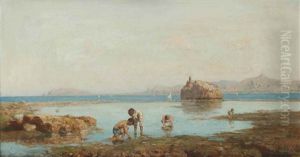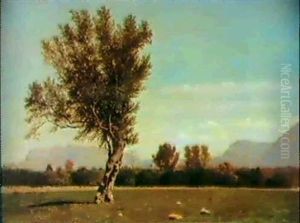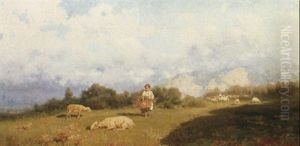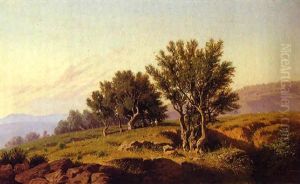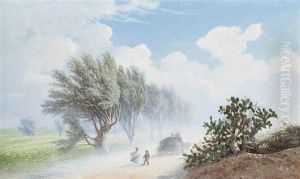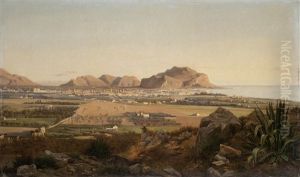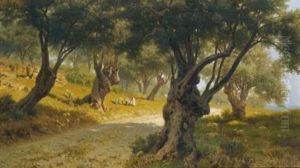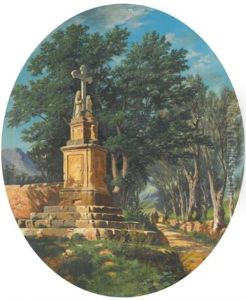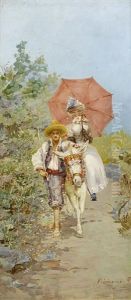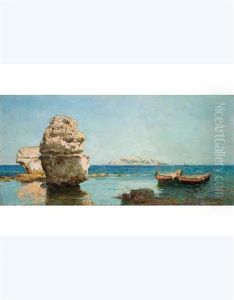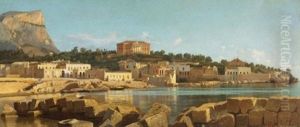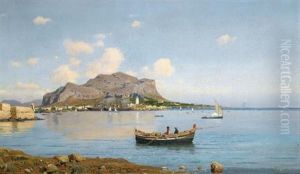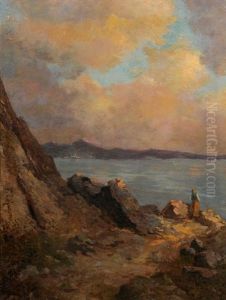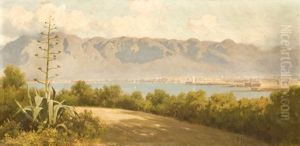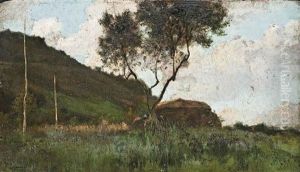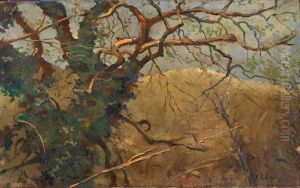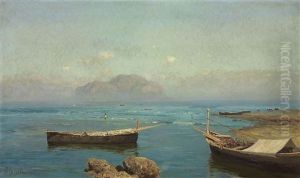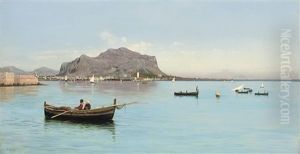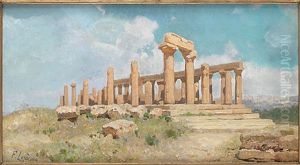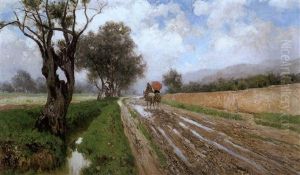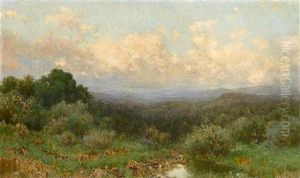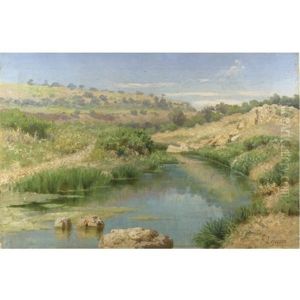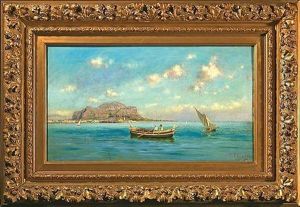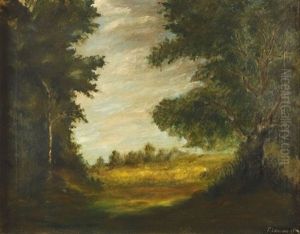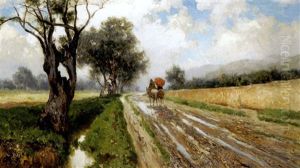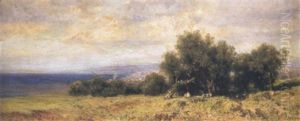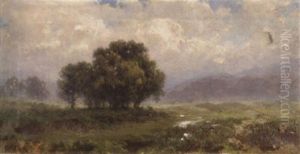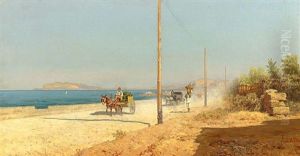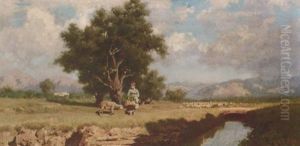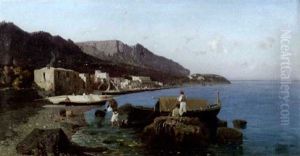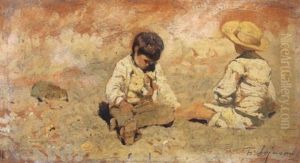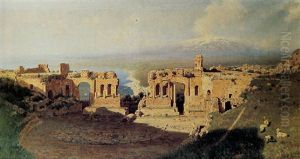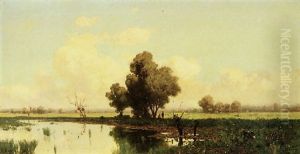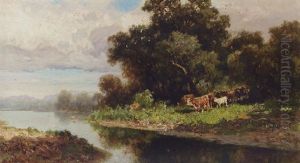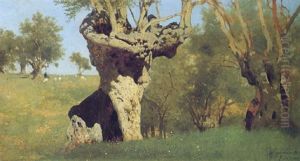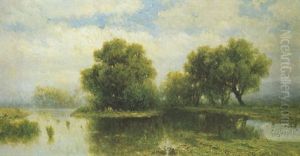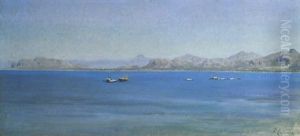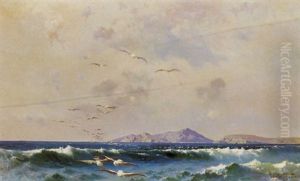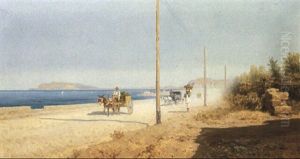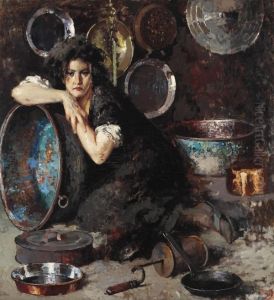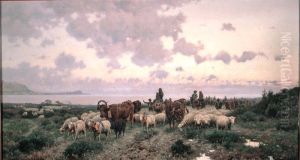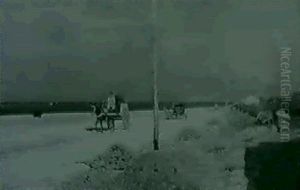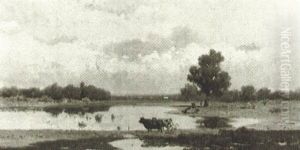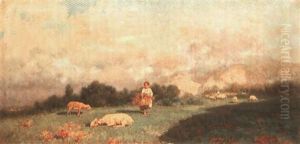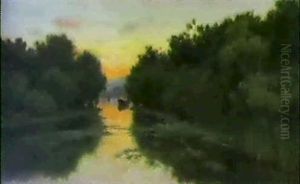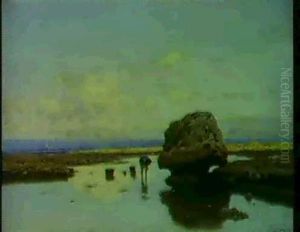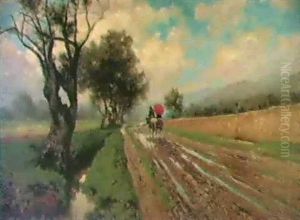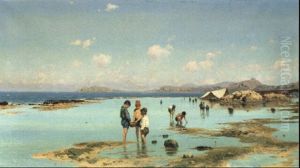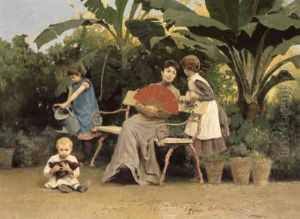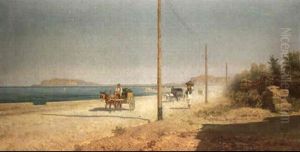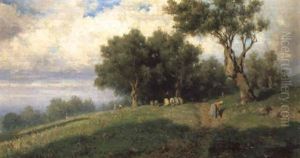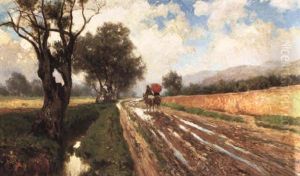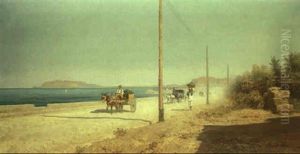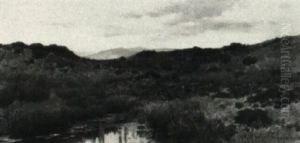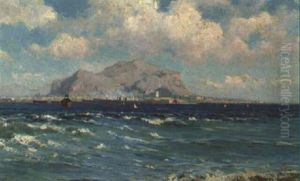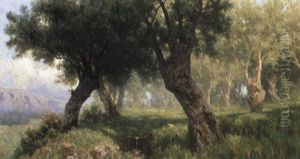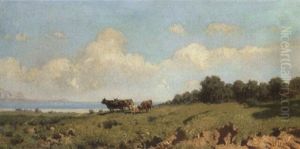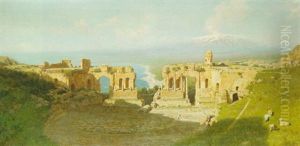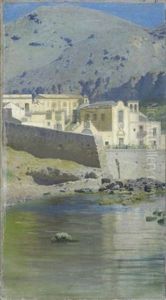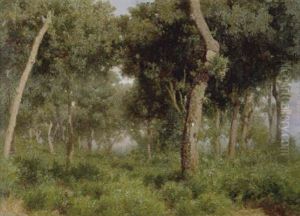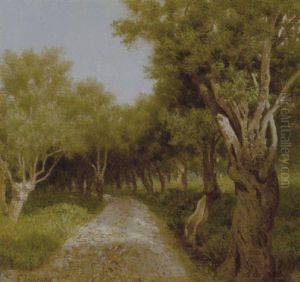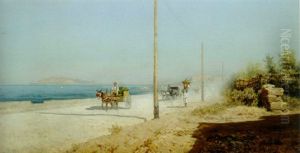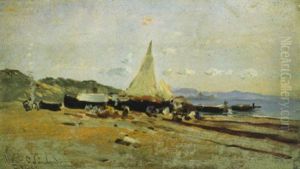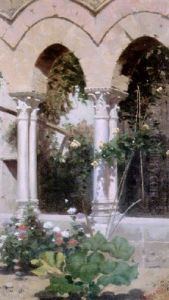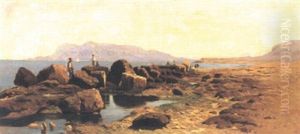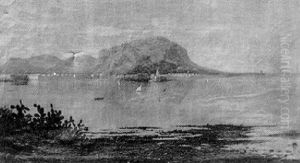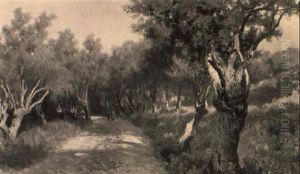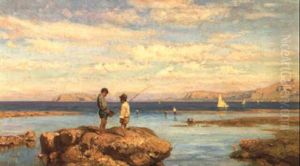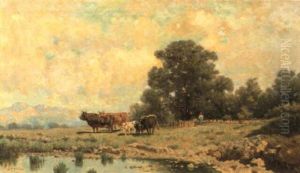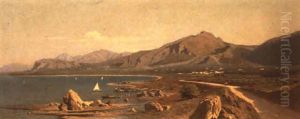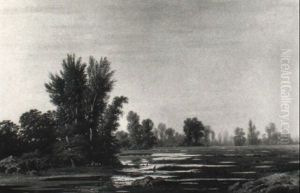Francesco Lojacono Paintings
Francesco Lojacono was a prominent Italian painter, born on November 9, 1838, in Palermo, Sicily. He is particularly known for his landscape paintings that capture the natural beauty of the Sicilian countryside and seascapes. Lojacono's works are characterized by their meticulous detail, vibrant light, and harmonious color palette, which together create a serene and idyllic atmosphere.
Lojacono's artistic journey began at the Palermo Academy of Fine Arts, where he studied under the guidance of the history painter Giuseppe Patania and landscape painter Salvatore Lo Forte. His early works were influenced by the Romantic movement, but he soon developed a more personal style that reflected the qualities of the burgeoning Italian verismo, a movement akin to realism.
Throughout his career, Francesco Lojacono contributed significantly to the Italian art scene. His landscapes were particularly innovative for their time, as he often ventured outside his studio to paint en plein air, a practice that was becoming more common among artists of his generation. This approach allowed him to capture the changing effects of light and atmosphere in a direct and immediate way.
Lojacono achieved considerable success during his lifetime. His work was exhibited and praised at national and international art exhibitions, including those in Palermo, Turin, and Paris. One of his most famous paintings, 'Veduta di Palermo' (View of Palermo), won the Prince Umberto Prize at the National Exhibition in Naples in 1877, securing his reputation as a master of landscape painting.
In addition to his painting career, Lojacono also held prestigious positions within the art community. He served as the director of the Galleria d'Arte Moderna (Gallery of Modern Art) in Palermo, and he was a professor at the Palermo Academy of Fine Arts, where he influenced a generation of Sicilian artists.
Francesco Lojacono's legacy is that of a painter who captured the essence of Sicilian landscapes with a delicate and refined touch. His paintings continue to be celebrated for their beauty and are held in various public and private collections. He passed away on March 14, 1915, in Palermo, leaving behind a body of work that remains an important part of Italy's artistic heritage.
